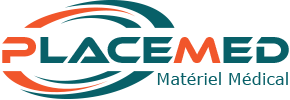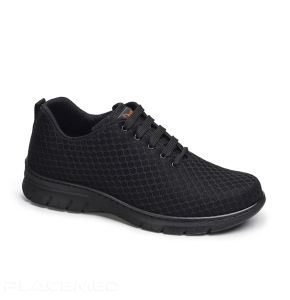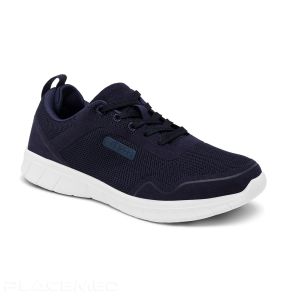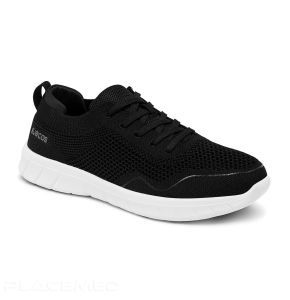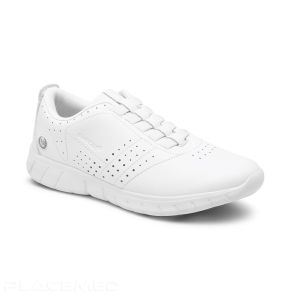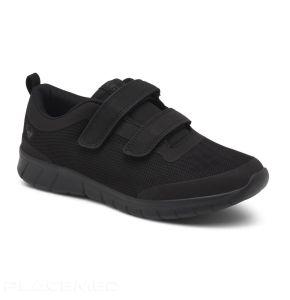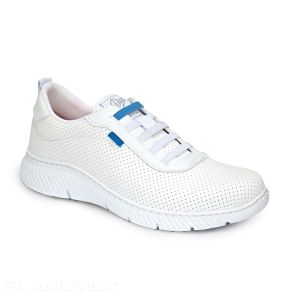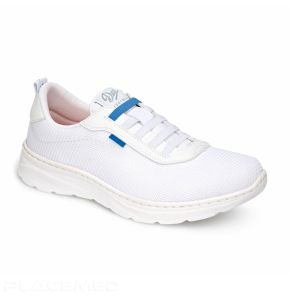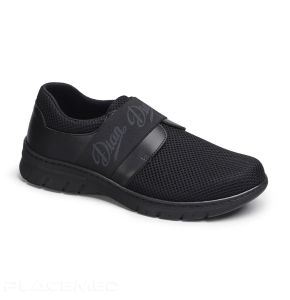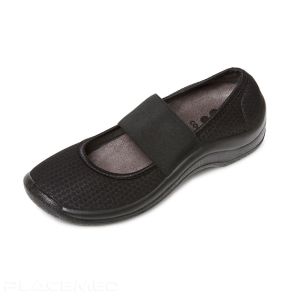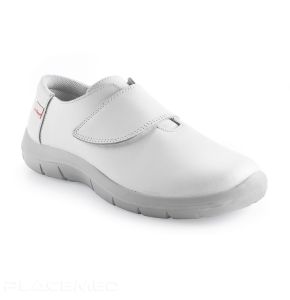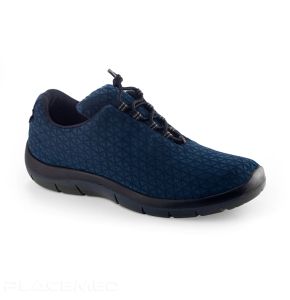Medical Shoe
Suecos Alma Classic Sneaker - Breathable, Non-Slip, and Comfortable - X-Cell Antibacterial Sole
8436532891168 30/05/2024 991
8435420422453 19/04/2024 1670
8435607222456 30/05/2024 890
Dian Valencia Plus Slip-On Shoes - Breathable and Water-Repellent Upper - Non-Slip EVA Sole - Machine Washable
8435420440501 24/04/2024 706
Medical Work Sneakers - Alma Ortho - Breathable and Non-Slip - Wide Heel for Greater Stability
8436532891175 30/05/2024 696
Breathable Antistatic and Non-Slip Sneakers - Lace-Up Closure - STABIL Suecos Unisex Model
8435607204025 05/06/2024 970
Suecos Alma Velvety - Lightweight, Antibacterial, Non-Slip, Elegant, and Comfortable Sneakers - Lace-Up Closure
8436532891182 30/05/2024 765
Microfiber Shoes for Healthcare Professionals - Model Suecos Dag Antistatic And Non-slip
8435607216660 07/06/2024 1263
Non-Slip Sneakers - X-Cell Antibacterial EVA Sole - Suecos LÄTT Unisex in Perforated Microfiber
8435607204131 03/10/2024 611
8436532892868 07/06/2024 598
Suecos Non-Slip and Antistatic Sneakers - Breathable Microfiber - Adjustable Laces with Lace Stoppers
8435607216448 07/06/2024 732
Suecos Klar Sneakers - Excellent Ventilation - Non-Slip Rubber Sole - Professional Work Shoes
8435607216554 07/06/2024 813
Suecos Alma Velcro - Ultra-Light, Breathable, Non-Slip Shoes - Adjustable Velcro Closure - Antibacterial Sole
8435607201703 30/05/2024 855
Ballet Flats by Suecos - Frida Model with Non-Slip Soles and Adjustable Velcro Closure
8436532883996 07/06/2024 623
8436532885730 07/06/2024 592
Suecos Shoes in Perforated and Water-Repellent Microfiber - Suecos Edda White Antistatic and Non-Slip
8436532885983 07/06/2024 1335
8436532896910 07/06/2024 667
8435420465313 04/05/2024 504
8435420461629 11/06/2024 803
8435420464231 29/04/2024 626
8435420466891 29/04/2024 472
8435420468413 04/05/2024 457
8435420464798 04/05/2024 476
8435420436610 24/04/2024 533
8435420462961 11/06/2024 627
8435420466198 04/05/2024 442
Antibacterial and Non-Slip Shoes with Elastic Closure for Healthcare Professionals - Dian Siena Tex
8435420444356 23/04/2024 535
8435420443205 23/04/2024 542
8435100212657 12/04/2024 527
8435420444110 23/04/2024 532
8435100216761 12/04/2024 550
8435100216365 12/04/2024 624
8435100216228 12/04/2024 398
8435100213715 12/04/2024 386
Slip-On Shoes by Codeor - Antibacterial and Multicolored Sublimated - Lightweight and Comfortable
8435100215559 12/04/2024 398
Sporty Work Shoes – YIN Model for Men - Monodensity Polyurethane Sole, Lightweight and Cushioning
8435100215153 12/04/2024 397
8435100214897 12/04/2024 597
8435100213593 12/04/2024 596
8435100214613 12/04/2024 494
8435100213920 12/04/2024 485
Comfortable Medical Shoes for Professionals!
In the medical field, the choice of footwear is essential. It's more than just a matter of style. Healthcare professionals spend long hours standing and moving. Constant movement through corridors and treatment rooms requires uniforms adapted to the demanding conditions of the medical sector.
A good medical shoe can make a significant difference in their comfort and performance at work. It helps prevent fatigue and pain while ensuring workplace safety.
Medical shoes are therefore not just an accessory, but a true work tool. They must meet specific standards to guarantee impeccable hygiene and optimal safety.
What Are the Types of Medical Shoes?
The selection of medical shoes is vast and varied. They offer various options to meet the specific needs of each healthcare professional. Here are the main types found in the medical sector:
- Medical Clog : Traditionally worn by nurses and doctors, clogs are easy to slip on and off. They provide good ventilation and are generally made from easy-to-clean materials.
- Medical Sneakers: These combine the comfort of sneakers with the necessary features for the medical environment. They are lightweight, offer good cushioning, and are often equipped with non-slip soles.
- Medical Moccasin: Offering a more classic style, moccasins ensure the required comfort and safety. They are easy to slip on and are suitable for professionals who prefer a lace-free model.
- Medical Tennis Shoes: Similar to sneakers, medical tennis shoes are designed to be comfortable and durable. They are particularly suitable for professionals who are constantly on the move.
- ESD Anti-Static Shoes: Ideal for laboratories and environments sensitive to static electricity. ESD anti-static shoes protect both the wearer and sensitive equipment.
- Medical Safety Shoes: For environments where additional risks are present. They offer enhanced protection while adhering to the standards of the medical sector.
Each type has its own advantages and is suited to specific needs. Clogs are perfect for those seeking simplicity and hygiene. Medical work sneakers are ideal for those who need mobility and comfort throughout the day.
It is important to consider working conditions. Personal preferences should also be taken into account. Finally, the requirements of the healthcare facility must be considered.
At Placemed, we offer a wide range of shoes to meet all needs. Whether you are looking for clogs, sneakers, moccasins, or other shoes for the medical field, we have what you need.
Why Are Medical Shoes Essential for Healthcare Professionals?
Healthcare professionals spend a large part of their day on their feet. They walk from room to room, often without having time to rest. This prolonged standing can cause fatigue, foot and back pain, and even circulatory problems.
Medical shoes are designed to provide optimal support and comfort, helping to reduce these inconveniences. They help prevent fatigue by offering good shock absorption and adequate arch support.
In addition, the medical environment presents specific risks, such as slippery floors or handling potentially dangerous substances. Medical shoes often feature non-slip soles and are made from easy-to-clean materials to maintain impeccable hygiene. By wearing ESD anti-static shoes, professionals can also prevent risks related to static electricity. This is particularly important in laboratories and operating rooms.
In summary, it is important to wear appropriate work shoes. This ensures the comfort, safety, and efficiency of healthcare professionals throughout the day.
What Specific Features Should a Quality Medical Shoe Have?
A good pair of medical shoes must meet several criteria to be truly effective. Here are the essential features to consider:
- Non-Slip: Non-slip soles are essential to prevent falls on sometimes wet or slippery floors.
- Easy to Clean: Models should be made from washable materials to maintain perfect hygiene, which is essential in the medical sector.
- Breathable: Breathable materials help keep feet dry, thus avoiding issues related to sweating.
- Arch Support: Good support helps reduce fatigue and pain associated with prolonged standing.
- Lightweight: Lightweight models facilitate quick and frequent movements, typical of work in the medical field.
- Compliance with Standards: These medical equipments must comply with standards such as ISO 20347, ensuring their quality and safety. Although medical shoes are not industrial safety shoes, they must still provide adequate protection.
- Anti-Static: Anti-static shoes are important in certain environments to prevent electrostatic discharges.
By choosing models that incorporate these features, healthcare professionals can significantly improve their comfort and safety at work.
How Do Medical Shoes Contribute to the Prevention of Musculoskeletal Disorders?
Musculoskeletal disorders (MSDs) are common among healthcare professionals due to static postures and repetitive movements. Medical shoes play a key role in preventing these disorders.
By offering good cushioning and adequate support, they reduce pressure on joints and muscles. Ergonomic insoles help maintain correct posture. This is essential to prevent lower back pain and other back problems.
Additionally, shoes with non-slip and anti-static soles allow for safe walking. They reduce the risk of falls and slips. They also prevent electrostatic discharges, which can be dangerous in certain medical environments like laboratories.
Are There Standards or Certifications for Medical Shoes?
Yes, medical shoes must comply with certain standards to ensure their effectiveness and safety. The ISO 20347 standard is one of the main references for work shoes without protective toe caps. It specifies requirements for slip resistance, energy absorption at the heel, anti-static properties, and more.
Certain models, such as those from brands like Suecos, Dian, or Safety Jogger, are designed to meet these standards. They also offer optimal comfort. It is therefore important to check these certifications when purchasing to ensure that the shoes comply with the standards of the medical sector. ESD anti-static shoes are also subject to specific standards to guarantee their effectiveness against electrostatic discharges.
How to Choose the Right Medical Shoe for Your Specific Needs?
Choosing the right pair is essential for comfort and safety at work. Here are some tips to help you make your choice:
- Identify Your Needs: Depending on your role (nurse, doctor, caregiver, etc.) and your work environment (hospital, laboratory, clinic), your needs may vary. There are different types adapted to the medical sector, such as work clogs, medical sneakers, medicalized shoes, or tennis shoes for a more sporty look.
- Comfort First: Ensure that the model offers good cushioning and adequate support. Try them on at the end of the day, when your feet are slightly swollen, for a better fit.
- Check the Standards: Opt for models that comply with the ISO 20347 standard or equivalent. This ensures a certain level of quality and safety.
- Easy-to-Maintain Materials: In the medical field, hygiene is paramount. Choose materials that are easy to clean.
- Style and Aesthetics: Although secondary, style can be important. There is a wide range of shoes that combine functionality and design.
- Consider Specifics: For women, specific models are available, including the medical shoe for women which offers a more precise fit.
- Recognized Brands: Brands like Dian, Codéor, Suecos, or Safety Jogger offer high-quality professional shoes. These are specially designed for healthcare professionals.
By following these tips, you can choose shoes that are adapted to your needs, thereby improving your comfort and efficiency at work.
 Francais
Francais 